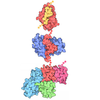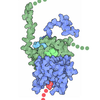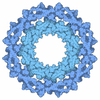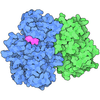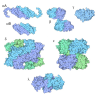[English] 日本語
 Yorodumi
Yorodumi- PDB-5wby: Crystal structure of mTOR(deltaN)-mLST8-PRAS40(beta-strand) complex -
+ Open data
Open data
- Basic information
Basic information
| Entry | Database: PDB / ID: 5wby | ||||||
|---|---|---|---|---|---|---|---|
| Title | Crystal structure of mTOR(deltaN)-mLST8-PRAS40(beta-strand) complex | ||||||
 Components Components |
| ||||||
 Keywords Keywords | TRANSFERASE / WD40 / PRAS40 beta / complex | ||||||
| Function / homology |  Function and homology information Function and homology informationRNA polymerase III type 2 promoter sequence-specific DNA binding / RNA polymerase III type 1 promoter sequence-specific DNA binding / positive regulation of cytoplasmic translational initiation / T-helper 1 cell lineage commitment / positive regulation of pentose-phosphate shunt / regulation of locomotor rhythm / positive regulation of wound healing, spreading of epidermal cells / TORC2 signaling / TORC2 complex / regulation of membrane permeability ...RNA polymerase III type 2 promoter sequence-specific DNA binding / RNA polymerase III type 1 promoter sequence-specific DNA binding / positive regulation of cytoplasmic translational initiation / T-helper 1 cell lineage commitment / positive regulation of pentose-phosphate shunt / regulation of locomotor rhythm / positive regulation of wound healing, spreading of epidermal cells / TORC2 signaling / TORC2 complex / regulation of membrane permeability / cellular response to leucine starvation / negative regulation of lysosome organization / heart valve morphogenesis / TFIIIC-class transcription factor complex binding / TORC1 complex / positive regulation of transcription of nucleolar large rRNA by RNA polymerase I / calcineurin-NFAT signaling cascade / voluntary musculoskeletal movement / regulation of osteoclast differentiation / RNA polymerase III type 3 promoter sequence-specific DNA binding / positive regulation of keratinocyte migration / regulation of lysosome organization / Amino acids regulate mTORC1 / cellular response to L-leucine / MTOR signalling / cellular response to nutrient / regulation of autophagosome assembly / Energy dependent regulation of mTOR by LKB1-AMPK / TORC1 signaling / energy reserve metabolic process / ruffle organization / serine/threonine protein kinase complex / negative regulation of cell size / cellular response to methionine / positive regulation of ubiquitin-dependent protein catabolic process / inositol hexakisphosphate binding / cellular response to osmotic stress / negative regulation of TOR signaling / anoikis / negative regulation of protein localization to nucleus / AKT phosphorylates targets in the cytosol / cardiac muscle cell development / protein serine/threonine kinase inhibitor activity / negative regulation of calcineurin-NFAT signaling cascade / regulation of myelination / positive regulation of transcription by RNA polymerase III / negative regulation of macroautophagy / positive regulation of actin filament polymerization / regulation of cell size / Macroautophagy / positive regulation of myotube differentiation / protein kinase inhibitor activity / Constitutive Signaling by AKT1 E17K in Cancer / oligodendrocyte differentiation / germ cell development / neurotrophin TRK receptor signaling pathway / behavioral response to pain / TOR signaling / mTORC1-mediated signalling / positive regulation of oligodendrocyte differentiation / positive regulation of translational initiation / CD28 dependent PI3K/Akt signaling / positive regulation of TOR signaling / response to amino acid / HSF1-dependent transactivation / regulation of macroautophagy / 'de novo' pyrimidine nucleobase biosynthetic process / cellular response to nutrient levels / vascular endothelial cell response to laminar fluid shear stress / positive regulation of lipid biosynthetic process / neuronal action potential / heart morphogenesis / positive regulation of epithelial to mesenchymal transition / regulation of cellular response to heat / positive regulation of lamellipodium assembly / cardiac muscle contraction / regulation of neuron apoptotic process / phagocytic vesicle / positive regulation of stress fiber assembly / negative regulation of TORC1 signaling / T cell costimulation / cytoskeleton organization / endomembrane system / negative regulation of autophagy / cellular response to amino acid starvation / protein serine/threonine kinase activator activity / positive regulation of glycolytic process / cellular response to starvation / regulation of signal transduction by p53 class mediator / Regulation of PTEN gene transcription / positive regulation of translation / negative regulation of protein kinase activity / VEGFR2 mediated vascular permeability / post-embryonic development / TP53 Regulates Metabolic Genes / regulation of actin cytoskeleton organization / phosphoprotein binding / non-specific protein-tyrosine kinase / cellular response to amino acid stimulus / regulation of cell growth Similarity search - Function | ||||||
| Biological species |  Homo sapiens (human) Homo sapiens (human) | ||||||
| Method |  X-RAY DIFFRACTION / X-RAY DIFFRACTION /  SYNCHROTRON / SYNCHROTRON /  MOLECULAR REPLACEMENT / Resolution: 3.1 Å MOLECULAR REPLACEMENT / Resolution: 3.1 Å | ||||||
 Authors Authors | Pavletich, N.P. / Yang, H. | ||||||
 Citation Citation |  Journal: Nature / Year: 2017 Journal: Nature / Year: 2017Title: Mechanisms of mTORC1 activation by RHEB and inhibition by PRAS40. Authors: Haijuan Yang / Xiaolu Jiang / Buren Li / Hyo J Yang / Meredith Miller / Angela Yang / Ankita Dhar / Nikola P Pavletich /  Abstract: The mechanistic target of rapamycin complex 1 (mTORC1) controls cell growth and metabolism in response to nutrients, energy levels, and growth factors. It contains the atypical kinase mTOR and the ...The mechanistic target of rapamycin complex 1 (mTORC1) controls cell growth and metabolism in response to nutrients, energy levels, and growth factors. It contains the atypical kinase mTOR and the RAPTOR subunit that binds to the Tor signalling sequence (TOS) motif of substrates and regulators. mTORC1 is activated by the small GTPase RHEB (Ras homologue enriched in brain) and inhibited by PRAS40. Here we present the 3.0 ångström cryo-electron microscopy structure of mTORC1 and the 3.4 ångström structure of activated RHEB-mTORC1. RHEB binds to mTOR distally from the kinase active site, yet causes a global conformational change that allosterically realigns active-site residues, accelerating catalysis. Cancer-associated hyperactivating mutations map to structural elements that maintain the inactive state, and we provide biochemical evidence that they mimic RHEB relieving auto-inhibition. We also present crystal structures of RAPTOR-TOS motif complexes that define the determinants of TOS recognition, of an mTOR FKBP12-rapamycin-binding (FRB) domain-substrate complex that establishes a second substrate-recruitment mechanism, and of a truncated mTOR-PRAS40 complex that reveals PRAS40 inhibits both substrate-recruitment sites. These findings help explain how mTORC1 selects its substrates, how its kinase activity is controlled, and how it is activated by cancer-associated mutations. | ||||||
| History |
|
- Structure visualization
Structure visualization
| Structure viewer | Molecule:  Molmil Molmil Jmol/JSmol Jmol/JSmol |
|---|
- Downloads & links
Downloads & links
- Download
Download
| PDBx/mmCIF format |  5wby.cif.gz 5wby.cif.gz | 1.1 MB | Display |  PDBx/mmCIF format PDBx/mmCIF format |
|---|---|---|---|---|
| PDB format |  pdb5wby.ent.gz pdb5wby.ent.gz | 918.3 KB | Display |  PDB format PDB format |
| PDBx/mmJSON format |  5wby.json.gz 5wby.json.gz | Tree view |  PDBx/mmJSON format PDBx/mmJSON format | |
| Others |  Other downloads Other downloads |
-Validation report
| Summary document |  5wby_validation.pdf.gz 5wby_validation.pdf.gz | 485.5 KB | Display |  wwPDB validaton report wwPDB validaton report |
|---|---|---|---|---|
| Full document |  5wby_full_validation.pdf.gz 5wby_full_validation.pdf.gz | 510.7 KB | Display | |
| Data in XML |  5wby_validation.xml.gz 5wby_validation.xml.gz | 86.4 KB | Display | |
| Data in CIF |  5wby_validation.cif.gz 5wby_validation.cif.gz | 118.3 KB | Display | |
| Arichive directory |  https://data.pdbj.org/pub/pdb/validation_reports/wb/5wby https://data.pdbj.org/pub/pdb/validation_reports/wb/5wby ftp://data.pdbj.org/pub/pdb/validation_reports/wb/5wby ftp://data.pdbj.org/pub/pdb/validation_reports/wb/5wby | HTTPS FTP |
-Related structure data
| Related structure data |  7086C  7087C 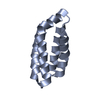 5wbhC  5wbiC  5wbjC 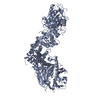 5wbkC  5wblC  5wbuC  6bcuC 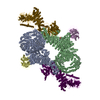 6bcxC 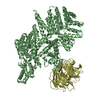 4jsnS S: Starting model for refinement C: citing same article ( |
|---|---|
| Similar structure data |
- Links
Links
- Assembly
Assembly
| Deposited unit | 
| |||||||||||||||||||||||||||||||||||||||||||||||||||||||||||||||||||||||||||||||||||||||||||||||||||||||||||||||||||||||||||||||||||||||||||||||||||||||||||||||||||||||||||||||||||||||||||||||||||||||||||||||||||||||||||||||||||||||||||||||||||||||||
|---|---|---|---|---|---|---|---|---|---|---|---|---|---|---|---|---|---|---|---|---|---|---|---|---|---|---|---|---|---|---|---|---|---|---|---|---|---|---|---|---|---|---|---|---|---|---|---|---|---|---|---|---|---|---|---|---|---|---|---|---|---|---|---|---|---|---|---|---|---|---|---|---|---|---|---|---|---|---|---|---|---|---|---|---|---|---|---|---|---|---|---|---|---|---|---|---|---|---|---|---|---|---|---|---|---|---|---|---|---|---|---|---|---|---|---|---|---|---|---|---|---|---|---|---|---|---|---|---|---|---|---|---|---|---|---|---|---|---|---|---|---|---|---|---|---|---|---|---|---|---|---|---|---|---|---|---|---|---|---|---|---|---|---|---|---|---|---|---|---|---|---|---|---|---|---|---|---|---|---|---|---|---|---|---|---|---|---|---|---|---|---|---|---|---|---|---|---|---|---|---|---|---|---|---|---|---|---|---|---|---|---|---|---|---|---|---|---|---|---|---|---|---|---|---|---|---|---|---|---|---|---|---|---|---|---|---|---|---|---|---|---|---|---|---|---|---|---|---|---|---|
| 1 | 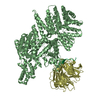
| |||||||||||||||||||||||||||||||||||||||||||||||||||||||||||||||||||||||||||||||||||||||||||||||||||||||||||||||||||||||||||||||||||||||||||||||||||||||||||||||||||||||||||||||||||||||||||||||||||||||||||||||||||||||||||||||||||||||||||||||||||||||||
| 2 | 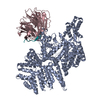
| |||||||||||||||||||||||||||||||||||||||||||||||||||||||||||||||||||||||||||||||||||||||||||||||||||||||||||||||||||||||||||||||||||||||||||||||||||||||||||||||||||||||||||||||||||||||||||||||||||||||||||||||||||||||||||||||||||||||||||||||||||||||||
| Unit cell |
| |||||||||||||||||||||||||||||||||||||||||||||||||||||||||||||||||||||||||||||||||||||||||||||||||||||||||||||||||||||||||||||||||||||||||||||||||||||||||||||||||||||||||||||||||||||||||||||||||||||||||||||||||||||||||||||||||||||||||||||||||||||||||
| Noncrystallographic symmetry (NCS) | NCS domain:
NCS domain segments: Component-ID: 1 / Refine code: 2
|
 Movie
Movie Controller
Controller


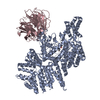
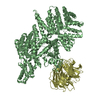
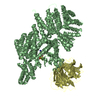
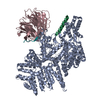
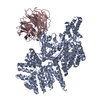
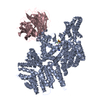
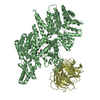
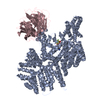
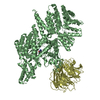
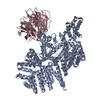
 PDBj
PDBj